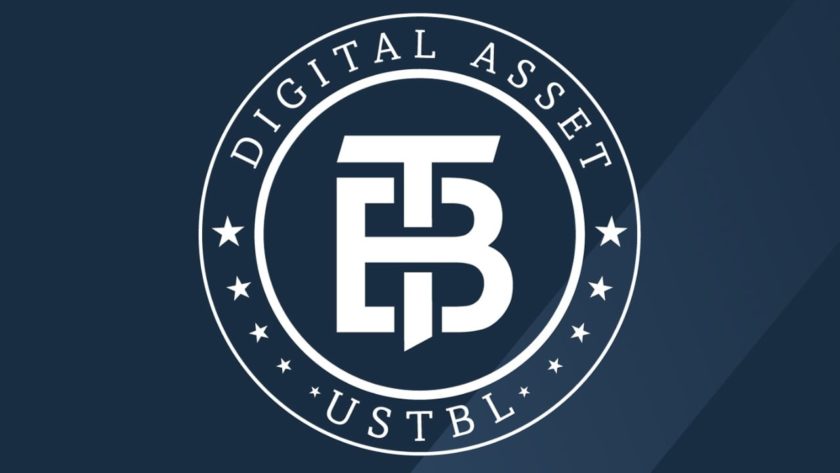Blockchain ‘Re-orgs’ – Are They Good or Bad for Bitcoin Security?
April 26, 2019 by Jon Southurst
The topic of blockchain “re-orgs” rose to prominence again this week for Bitcoin SV. Are they a particular problem for networks with larger transaction block sizes, as some in Bitcoin have suggested? Or a natural occurence that distributed networks can fix easily? Bitsonline looked at arguments on the issue and spoke to nChain lead developer Steve Shadders about how re-orgs should be handled… and perceived.
Also read: Starting a Career in Traditional Finance ‘Is a Risk’ in 2019, Says Liquid CEO
Subscribe to the Bitsonline YouTube channel for great videos featuring industry insiders & experts
Background: What Are Re-orgs and Orphans?
A “re-org”, or re-organization, is necessary when more than one miner solves different transaction blocks almost simultaneously, creating different versions of the blockchain that contain valid transactions. The re-org takes place when mining/node software determines which chain is longest (and thus the valid one) and must switch back to that chain — while also making sure the valid transactions on its shorter (or “orphaned”) chain are processed and can’t be double-spent.
Given the way transaction information propagates, this occurrence is uncommon, but frequent enough for software developers to build into their code, to ensure the smooth operation of the network.
(For this article, we’re looking at accidental orphaned chains rather than deliberate re-orgs; e.g.: an intentional rollback as the Ethereum network performed in 2016. or one by a hypothetical malicious miner with 51 percent of mining power.)
What Effect Do Re-orgs Have on Security?
Blockchair CEO and lead developer Nikita Zhavoronkov noticed a particularly large number of re-orgs on the Bitcoin SV blockchain last week, and suggested they could be a problem for a network with larger block sizes, like BSV’s.
Whoops! $BSV has experienced yet another reorg, this time 6 (six!) consecutive blocks were orphaned (#578640–578645), this chain included a 128 MB block #578644 🤦♂️ The network was basically stuck for 1.5 hours, and this shows that even 6 confirmations are not enough 🤷♂️ pic.twitter.com/dwGZmUCqtm
— Nikita Zhavoronkov (@nikzh) April 18, 2019
He also said users should wait for extra confirmations when accepting payments on the BSV network, to make sure transactions were valid on the main chain:
Someone’s asked what was the point of this tweet — the point was to warn people that they shouldn’t accept important payments on the $BSV network unless there are 5-6 confirmations. And that 2 GB blocks aren’t really a good idea without some groundwork first.
— Nikita Zhavoronkov (@nikzh) April 18, 2019
Bitcoin (BTC) maximalists Tone Vays and Jimmy Song touched on the issue in a recent video discussion, with Vays calling it “the tech side of large blocks and why they’re stupid”. Block size opinions have caused fundamental splits in Bitcoin for years, and resulted in two major hard forks creating Bitcoin SV and Bitcoin Cash (BCH).
Song suggested the issue was bound to plague BSV more than others, as larger blocks took longer for miners/nodes to download — causing them to naturally favor smaller blocks any time a larger one presented itself. A three-block (or more) re-org would “be catastrophic” for merchants relying on the BTC chain for security, he said (Bitcoin BTC has also experienced re-orgs, usually with 1-2 blocks affected).
BSV processes transaction blocks of up to 128MB and plans to increase them to 2GB or more; BCH also favors large blocks but currently has a 32MB maximum; BTC has kept block sizes to around 1MB and promotes using second-layer solutions (e.g.: Lightning Network) to handle smaller day-to-day payments.
(As newer technology, off-chain payment layer solutions come with their own set of concerns. However they’re separate to the re-org issue, and we’ll leave arguments over whether they represent a feasible solution for Bitcoin in global commerce for another article.)

Shadders: Re-Orgs a ‘Feature’ and Necessary for On-Chain Scaling
Steve Shadders is lead developer at nChain, which produces the reference protocol software for Bitcoin SV. In a detailed piece on Yours.org, he argued that re-orgs are a natural part of the transaction validation process; a “feature” designed to handle conflicting information on distributed networks, and just as secure as a blockchain where orphans and re-orgs are rarer.
Bitsonline spoke to Shadders and asked whether BSV opponents had a point.
Jon Southurst: Your article describes how re-orgs aren’t a serious threat to network security, however they don’t look great to outsiders (especially those who wish to attack BSV’s reputation). Do you worry about this?
Steve Shadders: This is a question of education. We have 10 years of rhetoric telling people “re-orgs bad”. It will take time to change the public perception. The (BSV) re-org event was beneficial in a way as it prompted the start of that reeducation process.
JS: Do reorgs present a bigger problem for larger-block cryptos, as Tone Vays and Jimmy Song said?
SS: It is correct to say they are more common in larger block blockchains. However I take issue with the word “problem”. They are not a problem, they are a feature. Orphaned blocks are precisely what drives miners to increase their capacity. Bitcoin scaling would be harder without them. The key takeaway from my last article on this subject is that users don’t need to worry about re-orgs. Miners do.
JS: Is Bitcoin SV trying to do too much too soon?
SS: We are trying to do a lot as quick as possible. But I don’t think it is too much. We are raising the limits of block size commensurate with our projections of what the software will be able to handle. The consequence of raising it further is simply some orphan blocks. This is the natural regulation mechanism of Bitcoin.
In recent months we have seen bitcoin beginning to exhibit the properties it was designed to have. Miners have taken notice of the increased amount of fees in larger blocks, I have had discussions with them about taking a more proactive role in setting competitive fee policies. They have also taken notice of the recent chain of orphan blocks and are taking action in response to improve. This is exactly the sort of behavior Bitcoin was designed to invoke and we are seeing it now on Bitcoin SV for the first time in Bitcoin’s history.
Do you agree the duty of transaction confirmation is handled well by miners? Or is it a concern to users? Let’s hear your opinions in the comments.
Images via Pixabay, Bitstocks Crypto podcast




